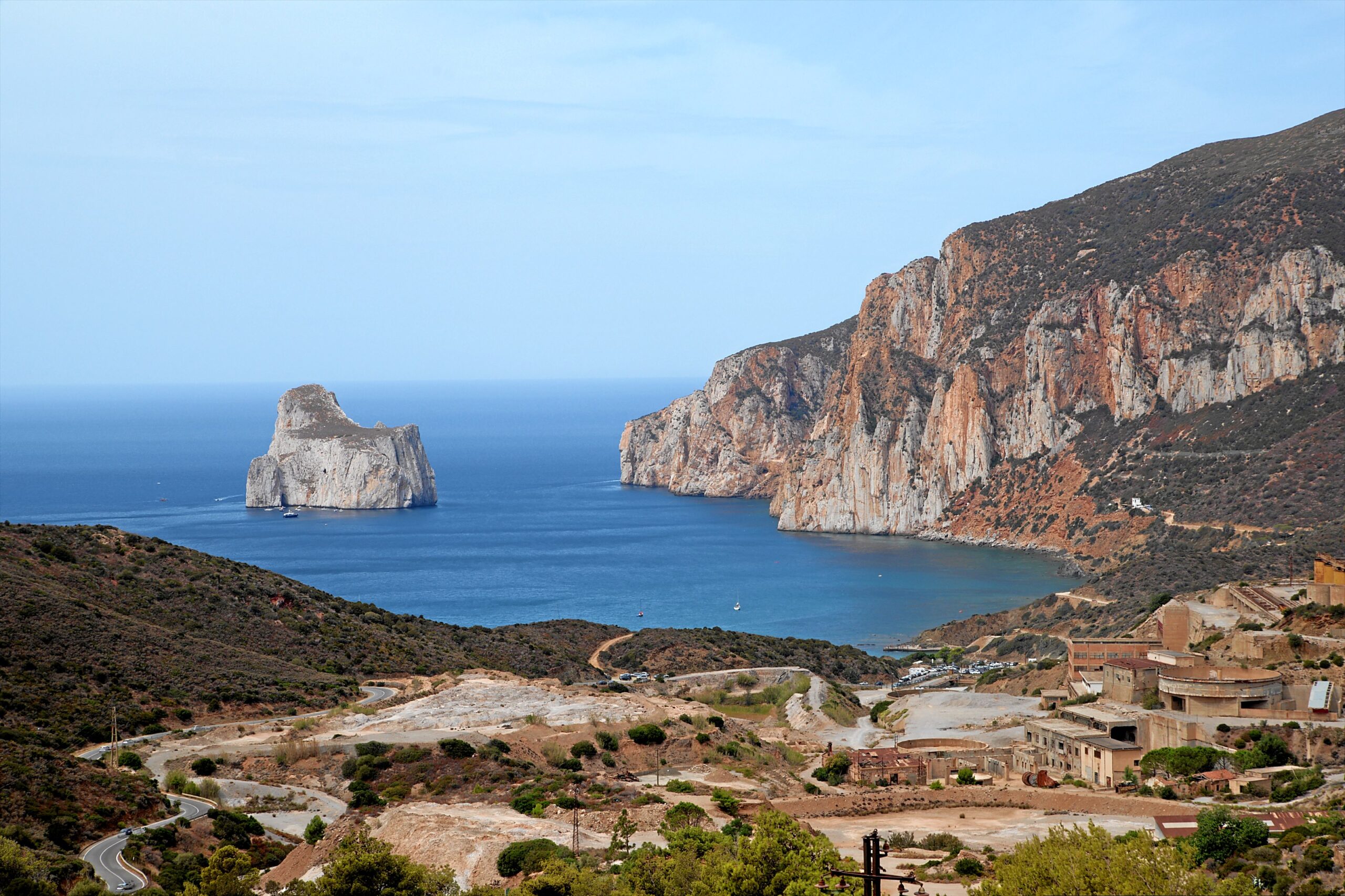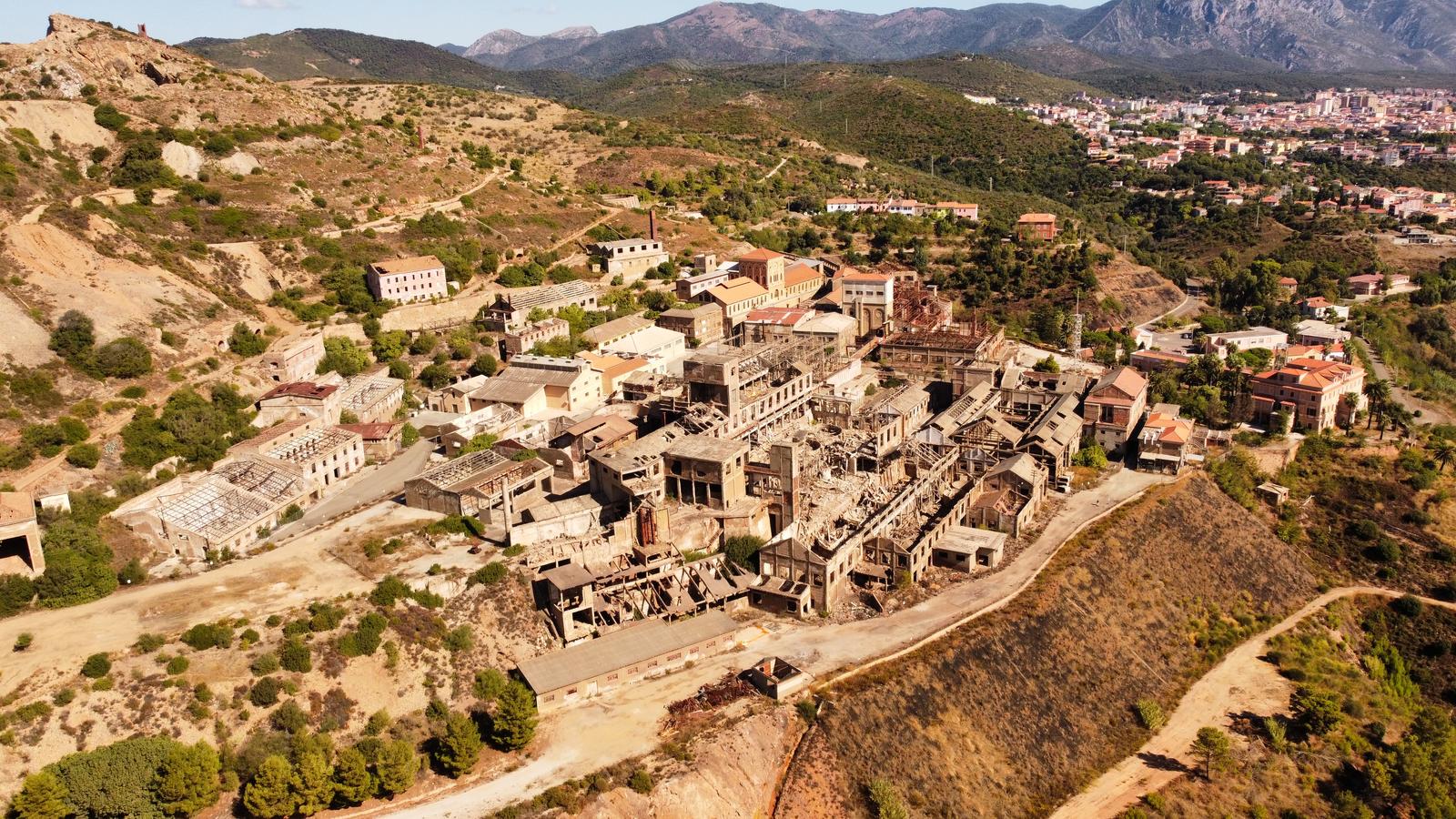Along the Santa Barbara Mining Trail: a Journey into the Hearts of Mining Sardinia
The Santa Barbara Mining Trail is a unique itinerary that winds its way through ancient minessuggestive villages and breathtaking views of south-western Sardinia. This article will guide you along the waythrough historical and spiritual landscapes to discover the hidden beauty of the island. If you love the walks that combine nature, culture and spirituality, this is the place for you. Follow us along the mining route to live an authentic experience between sea and mountain, rocks and memory, faith and history.
What is the Santa Barbara Mining Trail?
The Santa Barbara Mining Trail is a loop route of about 500 km divided into 30 stagesthrough the part south-western Sardiniaespecially the area of the Sulcis Iglesiente and the Guspinese. This walk is dedicated to Santa Barbara, the patron saint of minersand is promoted by the Santa Barbara Mining Trail Foundation. It was made for passing on the memory of men who have worked in the mines over the centuries, traversing mule tracks and railways that today are transformed into paths to be discovered in slow pace.

What is the historical importance of the walk?
The mining past of Sardinia has left a deep imprint on the local territory and culture. The disused mines today tell stories of toil and hope. The historical environmental geo-mineral park of Sardiniarecognised by UNESCO, guards these places of memory. Walking on these paths means rediscovering the beauty of the area at a slow pace and pay homage to the miners who have created and walked the ancient mining paths.
Where does the journey begin and end?
The Santa Barbara Mining Trail is a loop itineraryso you can start from different points. However, Iglesias is considered one of the main gateways. It is here that the headquarters of the CMSB Foundation and where many pilgrims collect the credential. After visiting the city and its historic centre, the return to Iglesias will be a symbolic moment of closing the journey, a circle being completed.
Discover First stage of the Santa Barbara Mining Trail on wikiloc
What are the most fascinating stages?
Le 30 stages of the route offer a variety of landscapes and impressions. Among the most beautiful are:
Masua e Nebidawith their sheer cliffs and the majestic Pan di Zucchero.
Buggerrucoastal village with a glorious past mining.
Montevecchio e Ingurtosuthe beating heart of the disused mines and stories of the miners.
Piscinasfamous for the sand dunes extending down to the sea, a unique landscape in the Mediterranean.
Portixeddu, a little corner of paradise where nature and silence come together.
Each stage is an opportunity to exploring beauty of Sardinia long its ancient paths.

What is the spiritual significance of the walk?
As well as cultural and naturalistic, the Way of Saint Barbara is also a route religious in the historical geo-mineral parkdedicated to the patroness of miners. Along thehistorical itineraryone encounters churches, shrines and chapels dedicated to the Saint. La credentialsimilar to that of the Pilgrim's Way to Santiagoaccompanies you in collecting stamps stage by stage, becoming a spiritual diary of your journey.
How to prepare for the journey?
Dealing with walks requires a minimum of preparation. Although the Santa Barbara Mining Trail is well marked with the logo of the pathit is advisable to study theitineraryand find out about refreshment and accommodation points, and carry suitable equipment. The route passes through isolated areas, so it is important to carry water, food and technical clothing. La credential can be obtained on the official website or from the CMSB Foundation.
What places do you pass through along the way?
The route passes through villages and towns full of history and authenticity: from Iglesias a Arbusthrough Monteponi, Guspini, Gonnosfanadiga, Portoscuso, Villacidroup to Sant'Antioco. Each village tells a piece of Sardinia, each encounter is a piece of humanity. The MINING WAY is also a journey village to villagebetween genuine hospitality and local traditions.
What is the role of the Geomining Park?
The geo-mineral park is the guardian of the identity of this part of Sardinia. Created to protect and enhance the heritage miningtoday promotes cultural, educational and tourist activities. The Santa Barbara Mining Trail is one of the most important projects of the geo-mineral park of Sardiniaas it combines environmental and religious valuememory and sustainability.
Why choose this path over other paths in Italy?
I Italy's paths are many and all fascinating, but few like this combine mining historyspirituality, wilderness and the sea. Here you walk among deposits, disused minesforests and dunes. You walk for passing on the memoryto find oneself, to rediscover the Sardinia long forgotten roads. If you are looking for a different, profound, authentic experience, the Way of Saint Barbara is for you.
Happy walking: what to bring home after 500 km?
After walking the 550 km (actually today the entire route is between 500 and 550 depending on the variants), what you take with you is much more than just an adventure. You bring the faces you meet, the landscapes you experience, the stories you hear. You bring the credential full of stamps, but also a heart full of gratitude. Walking here means pleasure of rediscovering at a slow pace not only a territory, but also oneself. And in the end, every pilgrim knows that the real treasure is along the way.
Conclusion: what to remember about the Santa Barbara Mining Trail?
- It is a historical, cultural and spiritual itinerary of about 500 km in the south-west of Sardinia
- It passes through the ancient mines and villages that made the island's history
- It is a loop route divided into 30 stages
- It is dedicated to St Barbara, patron saint of miners
- The credential accompanies the pilgrim on every stage
- The walk enhances the heritage of the Historical and Environmental Geomining Park of Sardinia
- It offers an authentic experience away from mass tourism
- Travelling slowly, respectfully and in a spirit of discovery
- It is perfect for those seeking silence, history and unspoilt beauty
- In the end, what counts is the journey, not the destination: have a good journey!
FAQ
What is the Santa Barbara Mining Trail?
It is a walk of about 500 km in the south-west of Sardinia that passes through ancient mines, historical villages and spiritual places linked to the figure of Santa Barbara.
How many stages does the walk have?
The path is divided into 30 stageseach with different geographical and cultural characteristics.
Where is the starting point?
One of the main starting points is Iglesiasalthough, being a loop route, it can start anywhere.
Do you need a credential?
Yes, the credential is recommended in order to certify the stages covered and to receive agreed hospitality.
What is the best time to walk?
Spring and autumn are the ideal times to tackle the MINING WAYthanks to the mild climate and beautiful landscape.
Is it a path suitable for everyone?
A minimum of training and adaptability is required, but it is also accessible to those who are new to the walks.
What does 'good path' mean in this context?
It is a sincere wish between pilgrims, a symbol of sharing and solidarity along the way.
What places can't I miss?
Among the most impressive: Masua, Nebida, Piscinas, Montevecchio, Buggerru e Portoscuso.
Who manages the path?
The route is promoted and curated by the Santa Barbara Mining Trail Foundation.
Why choose this path?
Because it combines nature, spirituality and memory mining in a unique itinerary in the Italy's paths.

